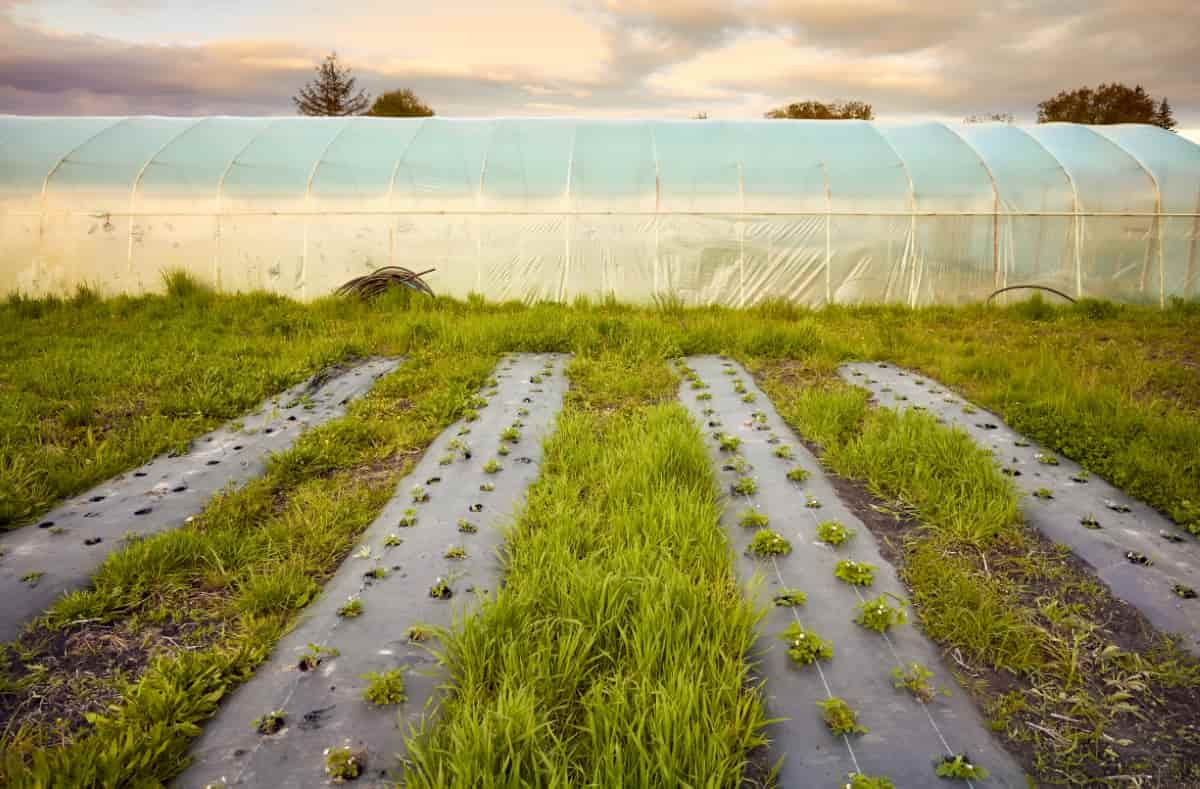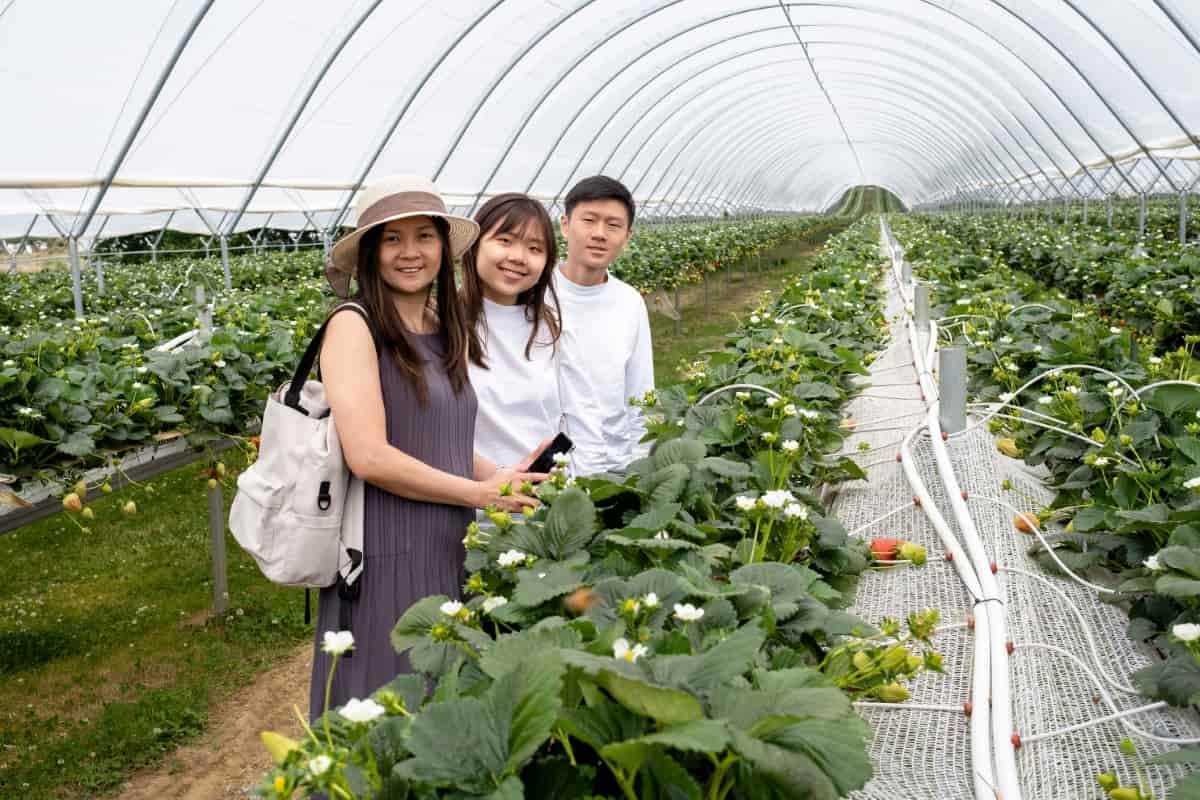Polyhouse farming has gained significant traction as an innovative agricultural technique thanks to its numerous advantages, such as a regulated cultivation setting, enhanced crop productivity, and other notable benefits. The implementation of this farming technique requires a comprehensive business plan. This guide helps you create a business plan for your polyhouse farming venture, covering key topics such as the polyhouse farming cost per acre, construction materials, construction cost, and a profit and investment analysis.

How to Create a Polyhouse Farming Business Plan
Understanding Polyhouse Farming
In polyhouse farming, crops are grown in a controlled environment where the temperature, humidity, light intensity, and other conditions can be manipulated. This technology allows farmers to cultivate crops all year round, regardless of the outdoor weather conditions. Polyhouse farming can increase crop yields by protecting the plants from pests, diseases, and harsh weather, thereby reducing the risk of crop failure.
Constructing Your Polyhouse: Cost and Materials
Construction Materials: The key materials involved in constructing a polyhouse include steel pipes, UV-stabilized polyethylene sheets, insect nets, shade nets, and more. The material choice may vary depending on your needs, local availability, and budget. For instance, UV-stabilized polyethylene sheets are critical as they protect plants from harmful UV radiation while ensuring they receive adequate light.
Construction Cost: The construction cost primarily depends on the type of polyhouse (naturally ventilated, fan and pad, or high-tech) and its size. For example, a naturally ventilated polyhouse might cost around $15,000-$20,000 per acre, a fan and pad polyhouse could be around $35,000-$40,000 per acre, and a high-tech polyhouse may go up to $60,000 per acre. These costs can vary based on local labor and material costs.
Polyhouse Farming Cost per Acre: This includes the construction cost, cost of plant material, labor cost, fertilizer and pesticide costs, irrigation cost, and other equipment like foggers, heaters, etc. It is estimated that the total cost per acre for a naturally ventilated polyhouse could be around $25,000-$30,000, a fan and pad polyhouse could be $45,000-$50,000, and a high-tech polyhouse might be around $70,000-$75,000.
Profit and Investment Analysis
Profit Analysis: The profit from polyhouse farming depends on the type of crop grown, the market price, and the yield per acre. For instance, if you grow high-value crops like bell peppers or tomatoes, you can expect to get around 15-20 tons per acre from a naturally ventilated polyhouse in a year. At a conservative price of $1 per kilogram, the gross revenue could be $15,000-$20,000 per acre.
Investment Analysis: Considering the total cost per acre (including construction, planting, labor, and maintenance costs) of $30,000 for a naturally ventilated polyhouse and the potential revenue of $20,000, the net profit per acre in the first year could be negative. However, considering the playhouse’s lifespan of at least 10-15 years, the investment can be recovered in the second year, and profit can be made from the third year onwards.
In case you missed it: How to Grow Moringa in Greenhouse/Polyhouse: A Step-By-Step Guide for Seed to Harvest

Developing a Business Plan
Developing a business plan is crucial in launching your polyhouse farming business. A well-structured business plan not only helps in mapping the future growth of your business but also attracts investors and lenders. Here’s a more in-depth look into each component:
Executive Summary: This acts as an elevator pitch that concisely explains your business’s overview. Summarize your business concept, financial features, financial requirements, the current state of your business (startup, established, etc.), and growth highlights.
Company Description: Here, you must provide a high-level view of your polyhouse farming business. Describe the business structure, vision, and mission, the primary crops to grow, and your unique selling proposition. Please include an explanation of the positive influence your business would have on the local economy and community.
Market Analysis: A thorough understanding of your market is crucial. Identify the crops in high demand in your target market, the potential customers, and the competitors. This section ought to present a comprehensive outline of your industry, encompassing its growth rate and prevailing trends. You should also explain your pricing strategy, sales forecast, and projected gross margin.
Organization and Management: Outline your business’s organizational structure. If you’re a sole proprietor, you’ll detail your background and role in the company. If you have a team, include an organizational chart highlighting key employees and their roles. Also, detail the legal structure of your business—whether it’s a sole proprietorship, partnership, or corporation.
Services or Product Line: Describe the crops grown in the polyhouse. Detail the technology and techniques you’ll use to grow and harvest these crops. Emphasize the benefits of your products, how they’ll meet a customer’s needs, and how they stand out in the market.
Marketing and Sales: Discuss your overall marketing and sales strategy. Identify your ideal customer, where to reach them, and how you plan to communicate your message. Also, outline your sales process, explaining how you will sell your products and retain customers.
Funding Request: If you need financial assistance, this section is where you should specify your current funding requirements. Please provide precise details regarding the required funds, your intended utilization of the funds, and the proposed method of repayment. Additionally, kindly include that information if you have plans for future funding rounds.
Financial Projections: Provide a forecast for the next five years. Include projected income statements, balance sheets, cash flow statements, and capital expenditure budgets. For the first year, consider providing these monthly or quarterly for better accuracy.
Appendix: The appendix is optional but can be used to provide additional supporting documents. It can include permits, leases, contracts, patents, licenses, and any legal documents or agreements you think are important.
In case you missed it: Ultimate Guide to Start an Organic Polyhouse Vegetable Garden: Creating from Scratch for Planting to Harvest

Conclusion
Setting up a successful polyhouse farming business requires a well-thought-out business plan. The plan should consider key factors such as the polyhouse farming cost per acre, construction materials, construction cost, and a thorough profit and investment analysis. With the right plan and effective execution, your polyhouse farming business can yield high returns and sustainable profits, making it a worthy investment for a promising future in agriculture.
- Feed Your Flock for Less: Top 10 Tips to Save on Chicken Feed
- Ultimate Guide to Ossabaw Island Hog: Breeding, Raising, Diet, and Care
- Hatching Answers: The Top 10 Reasons Your Chickens Aren’t Laying Eggs
- Eggs and Economics: Breaking Down the Cost of Raising Backyard Chickens
- Defend Your Greens: Proven Methods to Keep Iguanas Out of Your Garden
- Ultimate Guide to Cinnamon Queen Chicken: A Comprehensive Guide for Beginners
- Ultimate Guide to California Tan Chicken: Breeding, Raising, Diet, Egg-Production and Care
- Ultimate Guide to Marsh Daisy Chicken: Breeding, Raising, Diet, and Care
- 10 Types of Chicken Farming Businesses You Can Start for Profits